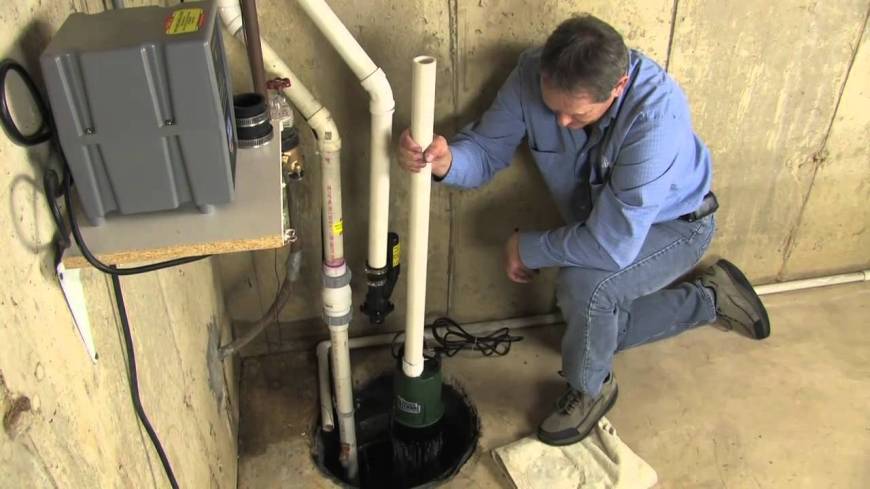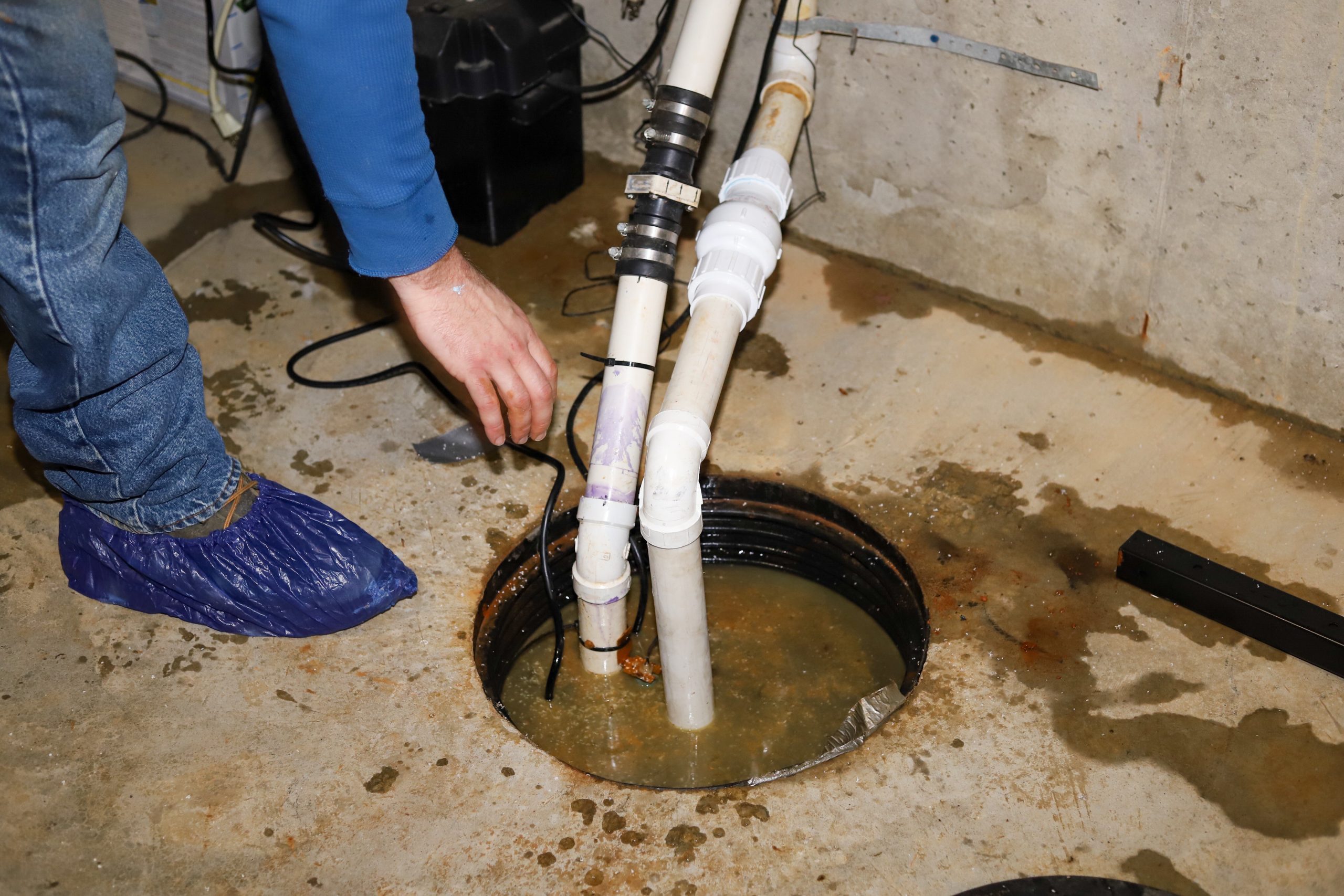Easy-to-Follow Instructions for Taking Care of a Sump Pump
Easy-to-Follow Instructions for Taking Care of a Sump Pump
Blog Article
What are your ideas about How To Effectively Clean A Sump Pump?

Sump pumps are important parts in numerous homes, specifically in areas susceptible to flooding or too much moisture. They help prevent water damage by efficiently getting rid of excess water from cellars or crawl spaces. Nevertheless, like any other home appliance, sump pumps require normal maintenance to ensure they operate successfully when needed one of the most. Cleansing your sump pump is a crucial part of its maintenance, and recognizing how to do it properly can conserve you from pricey repairs and potential calamities.
Intro
Maintaining a clean sump pump is crucial for its correct performance and longevity. Disregarding this necessary job can result in obstructions, breakdowns, and eventually, water damage to your residential property. As a result, learning how to cleanse a sump pump is vital for house owners who rely on these tools to maintain their cellars completely dry and secured.
Indicators of a Dirty Sump Pump
Recognizing when your sump pump needs cleansing is vital for stopping potential malfunctions. Some common indications that suggest a dirty sump pump include unusual noises during operation, reduced water circulation, and noticeable debris in the pit. If you see any of these signs and symptoms, it's important to clean your sump pump quickly to stay clear of any type of further concerns.
Preparing for Cleansing
Before you begin cleaning your sump pump, it's essential to take some safety and security preventative measures. Beginning by shutting off the power to the pump to avoid any type of electrical crashes. Furthermore, wear appropriate safety gear, such as handwear covers and goggles, to safeguard on your own from dust, debris, and prospective microorganisms.
Recognizing the Sump Pump
Before diving into the cleansing procedure, it's vital to have a standard understanding of exactly how a sump pump functions. Commonly mounted in a pit or basin below the basement floor, a sump pump includes numerous crucial elements, including a pump, a float switch, and a discharge pipeline. When water collects in the pit, the float button activates the pump, which then pumps the water out through the discharge pipe, away from the structure's structure.
Detailed Guide to Cleansing a Sump Pump
Shutting down the Power
Begin by disconnecting the power supply to the sump pump to prevent any kind of accidents while cleansing.
Checking for Appropriate Performance
Prior to reinstalling the pump, carry out a quick test to make sure that the float button turns on the pump appropriately. Put some water into the sump pit and observe the pump's operation. If every little thing is operating properly, you can reconstruct the pump and reconnect the power supply.
Removing Particles and Dirt
Use a pail or an inside story to eliminate any kind of noticeable particles, dirt, or sediment from the sump pit. Dispose of the debris effectively to stop it from blocking the pump or the discharge pipeline.
Cleaning the Pump and Drift Change
As soon as the pit is clear of particles, very carefully eliminate the pump from the pit. Evaluate the pump and the float button for any kind of indications of damage or wear. Utilize a soft brush or towel to clean up the surface areas and eliminate any type of collected gunk.
Purging the System
After cleansing the pump and float button, flush the sump pit with clean water to remove any type of staying dust or sediment. This will assist guarantee that the pump operates efficiently and effectively.
Upkeep Tips to Keep Your Sump Pump Clean
In addition to regular cleaning, there are a number of maintenance suggestions you can comply with to keep your sump pump in optimal condition:
Verdict
Cleansing your sump pump is a crucial aspect of its maintenance and guarantees that it operates successfully when you require it the most. By following the steps described in this overview and incorporating regular maintenance right into your regimen, you can expand the life-span of your sump pump and secure your home from water damages.
6 STEPS ON HOW TO CLEAN A SUMP PUMP PROPERLY
UNDERSTANDING SUMP PUMPS
Your sump pump plays a crucial role in protecting your home by managing and removing excess water. It primarily functions as a “shield”, guarding your basement against the damaging effects of water accumulation. The pump is housed in a sump pit in the lowest part of your basement, and its job is to pump out any water that collects there.
During heavy rainfalls or when snow melts rapidly, water can infiltrate your basement, posing potential risks like flooding, structural damage, and harmful mold growth. Here, the sump pump springs into action, pumping out the intruding water and directing it away from your home.
SAFETY FIRST
Before cleaning, remember to prioritize safety. Disconnect the sump pump from the power source to prevent any accidental electric shocks. Also, wear sturdy gloves to protect your hands from any sharp or dirty components within the pump.
REMOVE THE SUMP PUMP
After ensuring your safety, the next step is to remove the sump pump from its pit. Doing this might require careful maneuvering as you don’t want to damage any pump components. Once removed, clean the sump pit to remove any accumulated debris or sludge.
INSPECT THE PUMP
Inspect the pump for any visible signs of wear or damage. Check the power cord, float switch, and impeller housing. If any components look worn out or damaged, consider replacing them to ensure optimal performance.
CLEAN THE PUMP
Thoroughly clean the pump with warm, soapy water. Make sure to rid it of any dirt, gravel, or other debris that might impede its performance. You can use a toothbrush to clean the small, hard-to-reach parts of the pump.
REINSTALL THE SUMP PUMP
Reinstall the pump into the sump pit Make sure it’s positioned correctly to remove the water effectively Once it’s back in place, reconnect it to the power source TEST THE PUMP
Finally, pour some water into the pit to ensure the pump works correctly. It should start automatically and begin pumping out the water; if it doesn’t, check the power source and the positioning of the pump.
Remember, while cleaning your sump pump is an essential part of home maintenance, hiring a professional plumber for a thorough inspection and cleaning at least once a year is also important. This will ensure that your pump is in optimal condition, ready to protect your home from potential water damage.
BEST PRACTICES FOR CLEANING SUMP PUMP DISCHARGE PIPES
Regular Inspection: Regularly inspect your discharge pipes, especially during heavy rainfall or snowmelt periods. Look for any signs of blockage or damage. Early detection of problems can prevent serious issues down the line. Periodic Cleaning: Over time, sediment and debris can accumulate in the discharge pipes, impeding the flow of water. Regular cleaning helps keep the pipes clear and functioning efficiently. You can use a high-pressure water jet to effectively clean the pipes. Insulation During Winter: In colder climates, discharge pipes can freeze, blocking the outflow of water. Protect your discharge pipes from freezing temperatures by insulating them with foam pipe insulation. This will ensure the sump pump can continue to discharge water even in freezing conditions. Proper Positioning: The discharge pipe should be positioned to direct water away from your home’s foundation. Improper positioning can lead to water seeping back into the basement. Ensure the pipe is long enough and angled correctly. Installation of a Check Valve: A check valve prevents water from flowing back into your sump pit after the pump has pushed it out. Installing a check valve helps maintain the efficiency of your sump pump and reduces the risk of flooding. Minimize Pipe Turns: Every curve or turn in the discharge pipe can decrease the efficiency of water flow. By minimizing turns and bends in your discharge pipe, you can increase the efficiency of your sump pump. https://www.fullspeedplumbing.com/how-to-clean-a-sump-pump-properly9999/

I discovered that blog entry about Keep Your Sump Pump Clean, It'll Keep You Dry when doing a search on the internet. For those who enjoyed our post if you please make sure you remember to share it. I am grateful for being here. Kindly check our blog back soon.
Book 24/7 Report this page